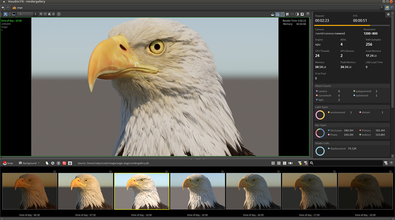Rob Pieké
robp_sidefx
About Me
Senior Software Developer - Solaris
Connect
LOCATION
United Kingdom
WEBSITE
Houdini Skills
Availability
Not Specified
My Badges

SideFX Staff
Since Jun 2020
Recent Forum Posts
Help with implementing custom 'BackgroundRenderer' March 14, 2025, 5:10 a.m.
It's on the near-term to-do list - RFE137495
Let me first say "while there perhaps isn't an easy better way, using a background renderer is risky" (I suspect ownership of the files transfers to the Render Gallery, so if you delete an imported file, you'll actually delete the file).
But to answer your query regardless....
I'm not sure why this isn't triggering thumbnail generation, but the image *is* importing (i.e., if you double-click on a thumbnail, the Render Gallery will display the right image)
Let me first say "while there perhaps isn't an easy better way, using a background renderer is risky" (I suspect ownership of the files transfers to the Render Gallery, so if you delete an imported file, you'll actually delete the file).
But to answer your query regardless....
from husd.backgroundrenderer import BackgroundRenderer
import hou
class LoadImageToGallery(BackgroundRenderer):
def pollFrequency(self):
return 0.01
def isRenderFinished(self):
inputpath = hou.ui.selectFile()
if inputpath:
self.updateImagePath(inputpath)
return True
def registerBackgroundRenderers(manager):
manager.registerBackgroundRenderer('Load an image', LoadImageToGallery)
I'm not sure why this isn't triggering thumbnail generation, but the image *is* importing (i.e., if you double-click on a thumbnail, the Render Gallery will display the right image)
Set to render sequence but overwrites the first frame March 3, 2025, 4:39 a.m.
tanguybc
why is the need to use a \ ?
I don't remember the exact details, but there are times you want
$Fto be expanded immediately, and times you want the evaluation deferred. The \ accomplishes the latter. Set to render sequence but overwrites the first frame Feb. 28, 2025, 7:34 a.m.
Can you share a hip file? Depending on where exactly you're specifying
$F4you may need to escape it with a backslash (i.e., \$F4), but in those places we generally try to make this clear in the parm's tooltip and/or other UI messaging. 
